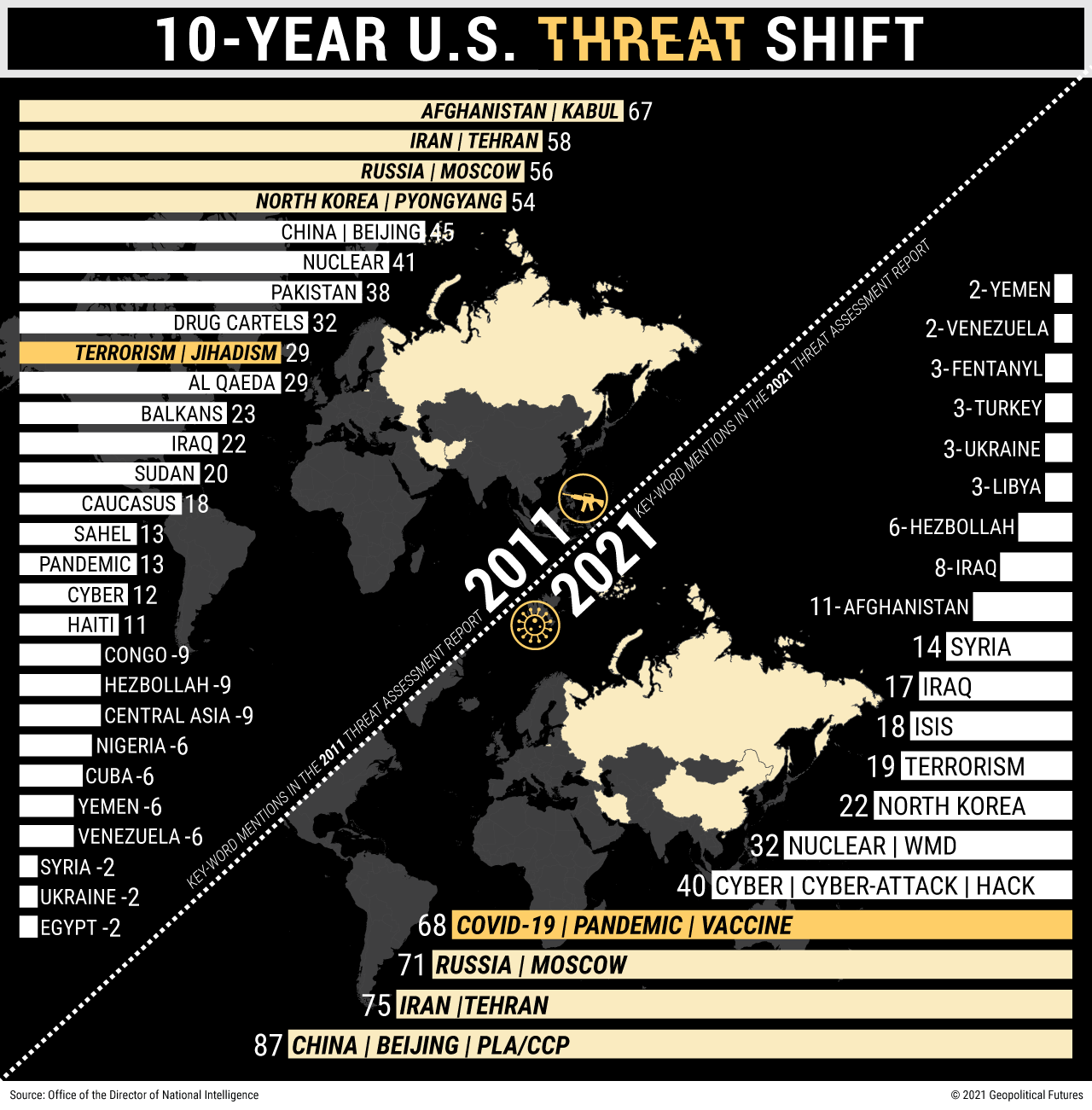The world is big and dangerous and turns slowly, as do U.S. perceptions of what it sees as most threatening across the globe over time. The shift in U.S. focus over the past decade is reflected in a shift in emphasis in the Director of National Intelligence’s annual threat assessment from 2011 to this year. A decade ago, the Islamic world was still taking up most of the spotlight. The U.S. was 10 years into its war in Afghanistan and in the midst of what, at the time, it hoped would be a last-ditch surge enabling U.S. troops to declare some sort of victory at home. Naturally, then, the 2011 threat assessment spends quite a bit of time justifying its strategy by detailing threats in Afghanistan, as well as across the border in Pakistan (which is conspicuously ignored in the 2021 report). Iran also got ample attention, partly since the U.S. was pushing for a nuclear deal with Tehran. The Islamic State was still a couple of years from bursting onto the scene with its dramatic takeovers of large swathes of Iraq and Syria, so al-Qaida and its many subsidiaries across the Middle East and North Africa still held center stage in terms of U.S. concerns about jihadist groups.
There were hints, though, of an increasing sense in the U.S. intelligence community that the U.S. had become far too preoccupied with nonstate threats in the Middle East, North Africa and South Asia – and far too prone to ignoring the looming return of great-power competition. Russia and China still received a fair share of attention themselves as a result. Notably, concerns about the potential for a deadly pandemic were also included, underscoring the reality that the COVID-19 crisis wasn’t exactly a black swan. By 2021, China, Russia and pandemics (and, as always, Iran) had become the clear top priorities.

No comments:
Post a Comment